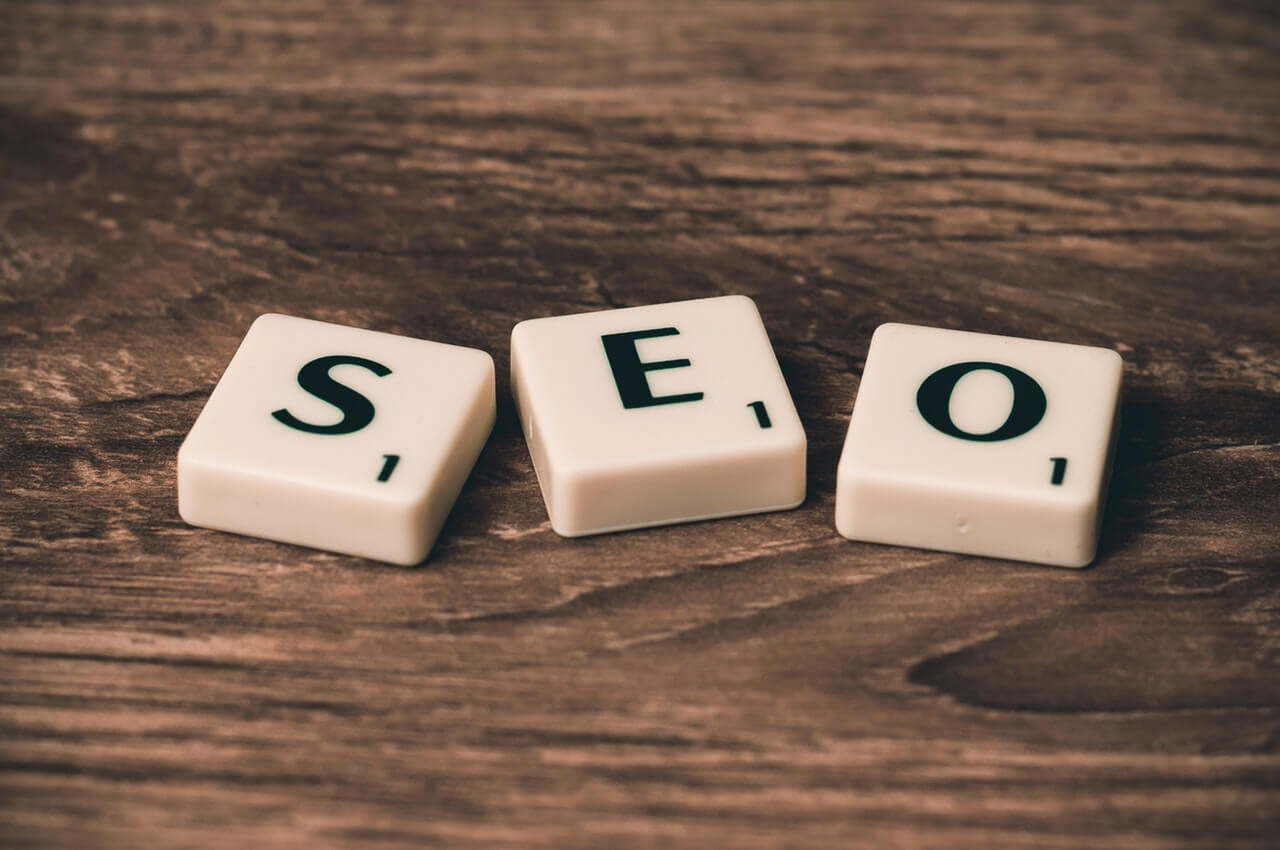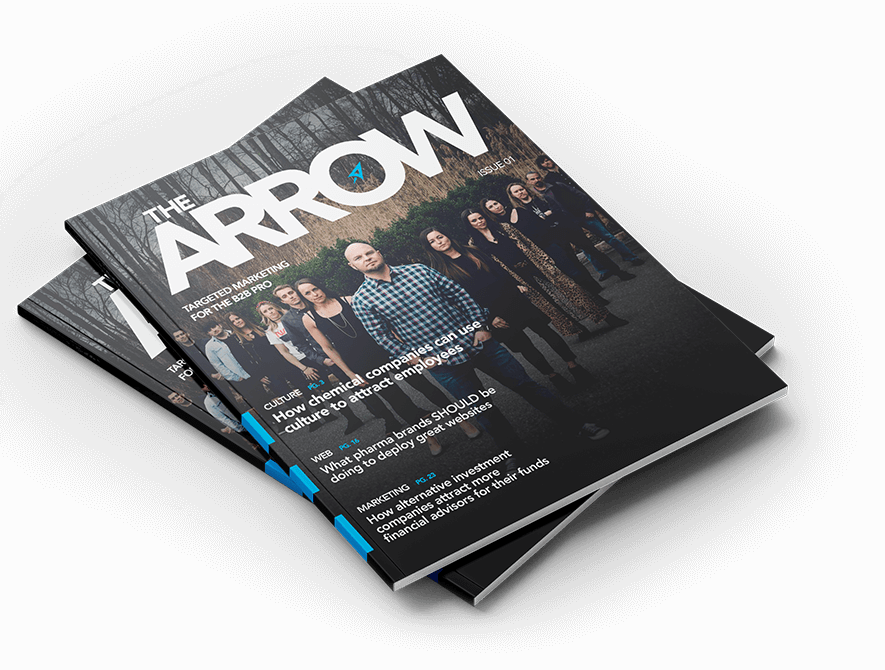10-Point SEO Checklist: Does Your Website Check All the Boxes?
Chris Mulvaney is the CEO of CMDS. I make things... I’m the creative entrepreneur with passion for (re)making brands and inventing solutions to problems no one knows exist.
Quick Links for Your SEO Checklist
Dreaming of ranking on page one and increasing traffic to your website? If you want to boost search engine rankings, every page on your website must be optimized. From shorter URLs to longer articles, this SEO checklist will help give your website a better chance at generating more traffic, improving leads and ranking higher than ever before.
Complete 10-Point On-Page SEO Checklist for Business Websites

Whether you’re an entrepreneur, local restaurant or a massive enterprise, if you want to grow your business in today’s economy, you need a strong presence online.
No doubt you’ve heard it before. But what does that really mean?
Too many businesses launch a website, splash in a little social media with some links, post a blog here and there (if any) and think they’re “doing SEO.” But that’s far from what it takes to get to those coveted first page rankings.
SEO (Search Engine Optimization) has become a vital tactic of digital marketing — one that businesses cannot afford to ignore a moment longer. But, with confusing algorithms that seem to change day-by-day, we understand it can be confusing to navigate and stay up to speed.
Today, marketing is about capturing the attention of people who are already looking for your product or service. To do that, businesses have to be at the top of search results, where people are looking for results. Just as brick and mortar stores try to get the best location, websites must rank well in search engine results to be successful online.
They need relevant content. And they need it fast.
“Our goal is simple: to give people the most relevant answers to their queries as quickly as possible.”
If you’re new to the complex world of SEO or just need to freshen up on your techniques, read through this SEO checklist of ten techniques to build your own strategy.
- Keywords – Choose and use the right focus keyword without stuffing.
- Tags – Optimize the title tags.
- Meta Description – Use this as your attention catching sentence or two to attract new visitors.
- URL – Shorter URLs are preferred by consumers and search engines.
- Mobile Optimization – People are rapidly changing how they access data which is exactly why your site must be mobile-friendly.
- Images – Mix up your multimedia to include images, GIFs, videos and infographics.
- Article Length – Longer articles rank higher. But they need to be high-quality.
- Links – Internal and outbound links help show search engines that your website is relevant.
- Security – Secure sites are preferred by customers and Google. Now’s the time to switch to HTTPS.
- Content – Give people what they’re looking for with relevant content.
Read more: Why Do Search Engine Rankings Matter When Building Your Personal Brand Online?

Focus Keyword
The first item on your SEO checklist is to identify a focus keyword or keyphrase. This is the optimal search term that you want your webpage or business blog to rank for. Before you even start writing, it’s important that you choose the right keyword; you’ll need to do some research for that first.
Read more: Maximize Your Website Content Strategy
Use each keyword only once. Your focus keyword is a phrase that you have not used as a previous keyword for any other page on the same website. It is also a word or phrase that people are actually searching for online.
Make sure it’s 1) relevant and 2) original.
Duplicate keywords, title tags and content are red flags for Google, as they provide no additional value to the end-user.
Once you have identified your focus keyword, include it in:
- Title of your page
- Heading (H1)
- URL
- Multiple times within the content of the article
- Meta description
- Alt tags on images
- In the first paragraph of your article
- Subheadings (H2)
- In alternate phrases and synonyms
In a nutshell: Your focus keyword should be found throughout the webpage, but should appear naturally; avoid keyword stuffing.
Title Tags
This is the title search engines display and indicates to people what the webpage is about. Use your title tag to lure in the clicks on the search engine results page (SERPs), as well as on social media networks (such as Facebook, LinkedIn and Twitter).
The above focus keyword must be present in your title tag, preferably in the beginning followed by a phrase with a secondary keyword and then brand name.
Use this format:
Primary Keyword – Secondary Keyword Phrase | Brand Name.
An example title tag would look like this: SEO Checklist – On-Page SEO Checklist to Rank Higher | CMDS (Oh hey, look! That’s our title tag!) But also remember, your title tag is the user’s first impression of your content. When they see it in a search result, it should convey the most relevant message possible.
Keep in mind, though, that your title tag is not just for search engines. It is for your customers, too. So make sure you avoid too many keywords in the title, or keyword stuffing. If you can make your title include keywords AND be enticing, it’s a win-win.
In a nutshell: Include the keyword. Recommended length: 50 to 60 characters long including the spaces.
Meta Description
Using keywords naturally, your meta description will describe the main topic of your site in about one to two concise lines. This snippet usually includes the term people are searching for and will appear in their results right underneath the clickable title tag like ours below:

While meta descriptions are not actually considered a ranking factor on this SEO checklist, it is important to help improve the CTR and bounce rates by getting the right people to click.
This is your chance to flex your marketing chops and sell the searcher on your page. Describe what the link contains so they can decide if the content is what they’re looking for and if they should click. With a direct impact on a page’s click-through-rate (CTR) and bounce rate, you’ll want to make sure that it accurately summarizes your article and entices the searcher.
Don’t sell it interestingly enough? No one will click.
Don’t sell it accurately enough? Everyone will bounce.
In a nutshell: Include focus keyword in an accurate, yet appealing description of the page’s content. Recommended length: 150 to 170 characters.
URL Structure
A complete SEO checklist also includes a strategic URL structure, the exact website address of a specific page. The URL should contain the focus keyword, avoid stop words and reflect the category hierarchy of the web page. Stop words are considered irrelevant words and ignored in search engines. Avoid using words such as the, is, at, which, for, of, or, to and on in the URL.
Providing valuable information to search engines and users, the URL and slug adds an important element of relevancy to any given page. The slug is what goes in the url behind the / of the parent category.
For example, a poorly written URL structure might look like this: http://www.badexample.com/cars/yy45877. The reference to the slug: “yy45877” does nothing for the user and provides little value for search engines.
A good URL structure example might look like this: https://www.goodexample.com/cars/car-restoration-tips.
In a nutshell: The URL should contain the focus keyword and should not contain stop words. Keep it relatively short and to the point.

Device Ready
Are you mobile-friendly? You have to be. Do you have a responsive website design? You must.
You’ve probably heard these things before. But did you realize that they directly impact your search engine optimization efforts? Google’s mobile-first indexing means that mobile versions of content will be predominantly used for indexing and ranking purposes. Considering that the majority of users access Google on a mobile device, it only makes sense.
Google states, “our crawling, indexing, and ranking systems have typically used the desktop version of a page’s content, which may cause issues for mobile searchers when that version is vastly different from the mobile version. Mobile-first indexing means that we’ll use the mobile version of the page for indexing and ranking, to better help our — primarily mobile — users find what they’re looking for.”
It’s basically Google’s effort to help make the web a more mobile-friendly place. Go ahead, find out if your pages are mobile-friendly with Google’s Mobile-Friendly Test.
Being mobile-friendly is more than just having a design that looks right. Google evaluates your mobile page speed, readability, platform compatibility, intuitiveness and clickability.
In a nutshell: Google mainly uses mobile versions of content for indexing and ranking. Don’t you think it’s time to get your site up to speed?
Read More: Mobile Page Speed Becomes a Ranking Factor For Mobile Searches

Multimedia
Your website should contain more than just text. Where appropriate, use multimedia, such as photos, videos, GIFs, infographics, etc. to capture viewers attention and keep them on your page longer. But make sure they are optimized.
When posting multimedia on your website, remember to include a file name and provide alt text. Alt attributes give search engines a text description of the visual content and include the focus keyword. Don’t forget about choosing the right format, size, resolution, file weight, captions… they all matter.
In a nutshell: Select a relevant engaging image or video to go with your article and add alt tags to emphasize the keyword.

Article Length
Compared to shorter content, longer content typically ranks higher in search engines like Google, Bing and Yahoo. But, longer is not always better. it has to be of high-quality so visitors will stay on your page and take the time to actually read it. The last thing you want to do is “fluff up” content just to meet a certain word count.
In the past, the recommended post length was right around 500-words. But now, that’s a minimum. Today, the posts that rank best typically sit around 2,000 words. To give you perspective, this blog is just under 2,400 words.
In a nutshell: At a minimum, a web page should be at least 700 words, aiming to 2,000 and higher.
Linking
Your page should include internal links and, where applicable, external links. Internal links connect your content to other pages and posts within your own website. Google crawls these links to understand the structure and relevancy of a website.
Google states, “In general, webmasters can improve the rank of their sites by increasing the number of high-quality sites that link to their pages.”
Link building with outbound links is also an essential component of your SEO checklist. Linking from your website to another website helps Google connect the dots and provide more relevant search results.
P.S. Nothing drives users and those little (yet powerful) search engine bots away from a website faster than a broken link or 404 page. Watch out for broken internal or external links and too many on-page links that are not only annoying, but can also harm your site rankings. Fixing errors like this is the most urgent thing.
In a nutshell: Links, both internal and external, aren’t the holy grail, but they are important to increase your site’s authority and drive more referral traffic.
Security
Take a look at your web browser. That little “s” at the end of the “http” part of a URL means this website is secure. HTTPS, which stands for Hyper Text Transfer Protocol Secure, ensures a site’s connection is protected through authentication and encryption. In the past, HTTPS connections were primarily used for sites that contained sensitive information. But now, secure connections have become standard.
With data hacks in the news more and more, consumers have never been more aware of online security issues. Their need to protect their personal data is top-of-mind when searching the Internet, so offering a safe environment for them is critical.
Supporting this concept by ensuring the best and safest user experience, Google’s ranking algorithm favors secure sites. The search engine giant labels any website that is not HTTPS as “not secure,” which makes it more difficult to rank higher — and to get people to overcome their wariness and click on your site.
Secure Site = More Clicks = Higher Rankings = More Traffic.
In a nutshell: Be proactive and get your website secured stat. Your visitors will thank you.
Read More: An In Depth Look at How Website Design Affects Conversion Rates
Relevancy
Last, but not least, no SEO checklist would be complete without the all-important, relevant content.
Google rewards pages that give users what they want.
Make sure your pages are not only relevant, but also give viewers a reason to share it by making sure that content is quality. Considering Google’s main goal is to provide relevant answers to search queries as fast as possible, your focus should be the same.
Imagine if a person searches for “SEO Checklist” in Google. They click on one of the top links because they’re lured in with the title and meta description that all indicate relevant content that will solve all their problems. But, once they arrive on the page, they start scrolling and discover that the content is far from a quality SEO checklist…it’s more like an advertisement. They quickly hit the back arrow and skedaddle in less than 5 seconds.
Google will notice that this article didn’t meet the needs of the user and resulted in a less than stellar bounce rate. Google notices everything.
High-quality, relevant content is like the superstar of the SEO show…all of the above elements on your checklist are there to support that superstar. The show can’t go on without the main attraction…or the supporting actors.
In a nutshell: High-quality relevant content not only gives your audience what they’re looking for, but it helps your pages get indexed and become more visible in search results.
Your customers are looking for your product or service- right now.
Are you sure that they can find you?
If all of this SEO talk sounds overwhelming or confusing to you, you’re not alone. Contact us at CMDS. Our in-house strategists will help you navigate through your own SEO checklist and get your page ranking where it needs to be to get the traffic you deserve.





